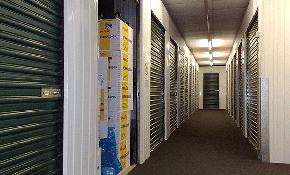 Murphy: “Dollar savings for the US taxpayer and the future ability to adapt and redefine the mission were critical components of the project.”
Murphy: “Dollar savings for the US taxpayer and the future ability to adapt and redefine the mission were critical components of the project.”
DALLAS— It’s no secret that a project on the scale of the 1.5-million-square-foot, $850-million National Security Campus would present both opportunities and challenges for development. CenterPoint Properties’ development of the National Security Campus in Kansas City, MO, is one of the dynamic projects being explored at NAIOP’s I.CON Impact Projects here next month. CenterPoint has been involved with the large-scale project from the start, executing the site procurement, financing, design and construction and now the operations of the facility, including asset and property management.
Clearly, this project was no easy feat for any developer, with the added challenge of federal-government mandates to reduce the federal real estate footprint throughout the country. The US government owns nearly 3 billion square feet and 42 million acres of real estate across the nation. In the past decade, a number of initiatives have been introduced to reduce the amount of under-utilized public-sector properties and foster more sustainable real estate solutions, including the White House’s “Campaign to Cut Waste” and the Office of Management and Budget’s “Freeze the Footprint” policies.
CenterPoint worked with the community, city, government, school districts and concerned citizens to get this site zoned for a government manufacturing complex. Among the benefits for the community are 1,500 local construction jobs, several contract opportunities for minority- and women-owned businesses and tax revenue for the school district. GlobeSt.com spoke exclusively about the project with CenterPoint’s chief development officer and development team leader on the project, Michael Murphy.
GlobeSt.com: How did you address the White House mandate to reduce the government footprint in real estate?
Murphy: First, this was a critical facility for the Department of Energy. The mandate has been to reduce the government’s square-footage footprint and be more efficient. This was a private/public partnership, and it was the first time the government did the development of a national-security-campus facility with a private developer where the government was a tenant and not the owner of the facility. This drove significant savings; government personnel moved out of a 5-million-square-foot campus they had shared with the GSE, moving from a World War II piecemealed manufacturing campus into a fully integrated facility with the flexibility to change as its mission and needs change. Dollar savings for the US taxpayer and the future ability to adapt and redefine the mission were critical components of the project.
GlobeSt.com: What were the most interesting aspects of the National Security Campus project?
Murphy: We were blessed with an individual at CenterPoint who had some experience with the DOE and really spearheaded this. Jim Cross, SVP of development for CenterPoint, was the architect of this project, the catalyst to the pursuit of it and the one who made this project work. We all do have security clearance because this is a national security campus, but the most challenging thing is that we were handed a list of specifications for designing and pricing this facility that was 3,800 pages long. We still had to articulate the design specifications into a drawing and meet the requirements for air, compressed gas and HVAC into different rooms. The challenge was taking this massive specification and turning into a workable design and working solutions.
Through Building Information Modeling technology and our own technology, we designed the elements of the rooms. We had to meet temperature controls, and the machinery had certain requirements. The design team was a big part of how we got this done. We are a big build-to-suit developer, and we had built to design plans, but here the hurdle was much higher: We had to meet design criteria in rooms that hadn’t been designed yet. There were complications since the facility manufactures hardware for the nuclear bomb. It makes the casings, relays and chips, and with the SALT Treaty we’re not building new nuclear weapons but refurbishing existing ones. From a physical standpoint in my 30-year career, if I took every project I’ve ever been involved with, this was that times two.
There was a significant central utility plant that housed the entire campus. It had to have the flexibility of HVAC and power. There was an office building and 3.2 million square feet of hardcore manufacturing space, a warehouse, some level of distribution, assembly, HVAC needs, 10- to 12-inch floors in multiple sections, plus a very significant design and delivery process. Together with the National Nuclear Security Administration and Honeywell, we had a huge integration and design team.
This was a big project. From the moment we broke ground to delivery, the first phase was delivered in 29 months, and the second in 35 months—it was a three-year construction project.
GlobeSt.com: What factors contributed to your success with this project?
Murphy: The predevelopment process and design team were key, along with JE Dunn Construction, a Kansas City construction company; CenterPoint’s integration team; and working collaboratively with the government. Jim Cross had previous DOE relations, and that created a nice bridge and the ability to get in front of issues and solve problems. We securitized this lease up front, so the financing of this project was pretty unique. We put in pretty significant equity, but then sold future 20-year cash flows to insurance companies and put the money in escrow to fund project costs. It was about an $850-million project. We went into this project early, with a clear focus on timing, schedule and delivery. We raised a certain amount of money to carry debt through construction. Every day that we were delayed cost about $165,000. That was a huge motivation for everyone, especially the government. It forced them to sit and make decisions and for us not to lose cycle time in the pre-design and construction process. It really helped move the project forward.
Also, the financing was extraordinarily cost effective. We were able to raise money for a 5.5% coupon, fully amortized over 20 years, on a three-year construction project. It was a very efficient way to raise a maximum amount of money for government use and with taxpayer dollars. It delivered on time and on budget—early even—hitting all hurdles. It was a very successful project for the US government.
GlobeSt.com: What else should our readers know about the project?
Murphy: The state of Missouri and the city of Kansas City Planned Industrial Expansion Authority assisted us in bond finance. The mayor of Kansas City was instrumental in helping us achieve approvals, and both senators were helpful. There was incredible support locally and in the state; it was a great public/private partnership. The financial returns for being on time and on budget were a big benefit to the government. It created 3,000 jobs in Kansas City—high-paying, attractive jobs. The assistance was outstanding and really helped make this project a big success.

















 Copyright © 2024 ALM Global, LLC. All Rights Reserved.
Copyright © 2024 ALM Global, LLC. All Rights Reserved.